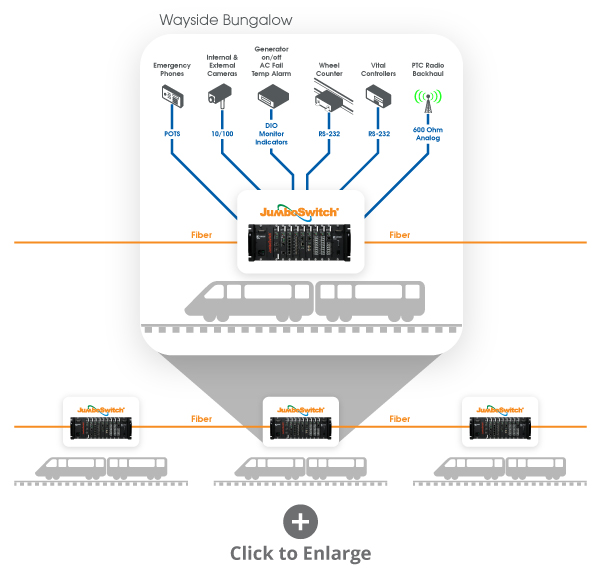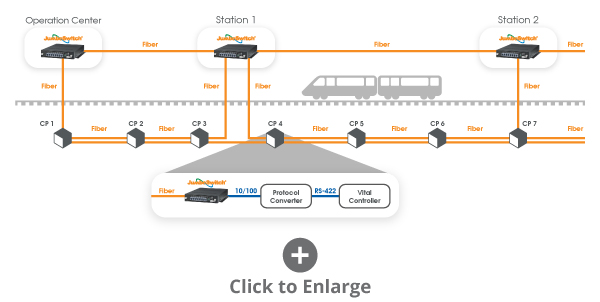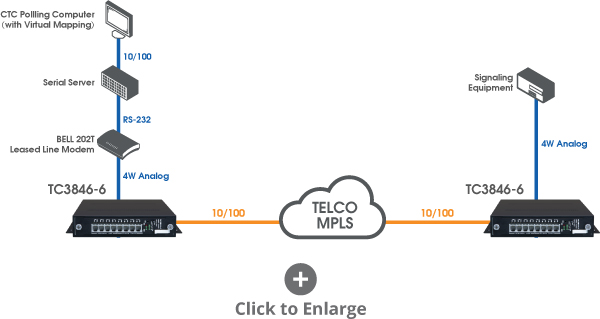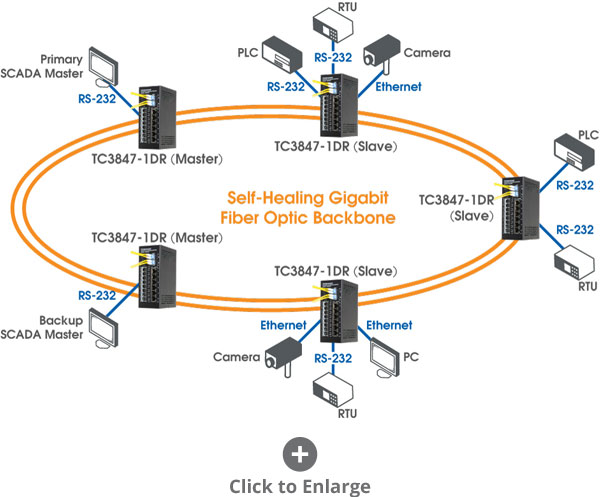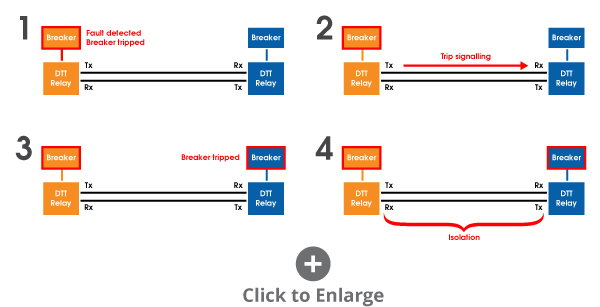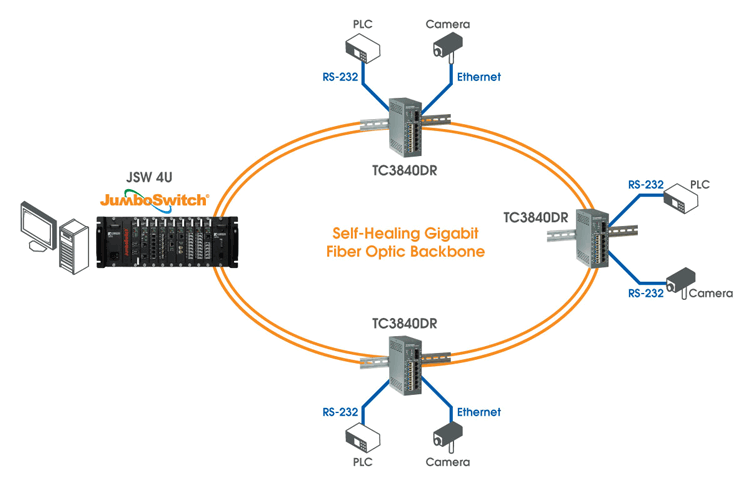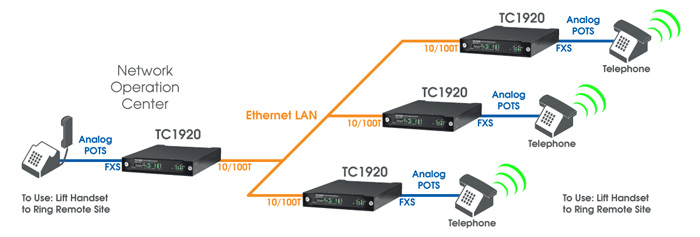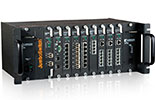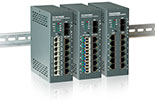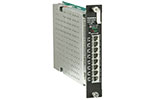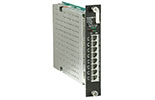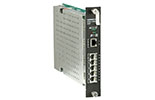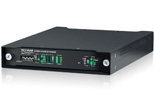Railway operations and control networks are complex and undergoing changes similar to other critical infrastructure industries, such as the introduction of microprocessor-based relays and more data points and security to enhance safety and control of the railway. TC Communications provides solutions for several applications used by rail systems, including:
- SCADA: Our JumboSwitch® line and related products together support all SCADA serial formats and interfaces, including RS 232/422/485 synchronous and asynchronous data, which provides the most reliable connections over Ethernet, T1, or fiber.
- Direct Transfer Trip: Our equipment allows standard DTT equipment to carry signals over a modern transport like Ethernet, T1, or fiber when leased lines become unavailable or too expensive.
- Ethernet Switching: Mission-critical Layer 2 Ethernet switching is provided by our JumboSwitch product line. Providing data rates of up to 10G and MTBF of more than 300,000 hours, it is one of the most reliable and capable Ethernet switches on the market.
- Analog Phone Systems: Our products support SIP and analog phone systems in rail systems, such as crash phones, and with the use of a “voice gateway,” allow computers to make voice calls over analog phone lines.
Industry Solutions
Wayside cabinets contain a myriad of equipment including remote terminal units (RTUs), relays and dry contacts that provide site status and controlling and signal information that are vital to operations and safety. Our products are engineered to withstand harsh weather conditions and connect your wayside devices reliably anywhere.
In this diagram the customer upgraded from copper to fiber backhaul to better withstand harsh environmental conditions and allow for greater bandwidth. They selected JumboSwitch to integrate a myriad of interfaces including 600-ohm analog, serial, Ethernet and telephony. In addition they added a dry contact to monitor low fuel levels, generator on/off and temperature sensors for their backup propane and diesel generation saving maintenance trips to check fuel levels and status.
A centralized traffic control (CTC) interlocking location, often referred to as a control point prevents trains from colliding on the tracks. The system administering and controlling these functions must be reliable to provide safety regardless of weather conditions. Our JumboSwitch platform easily integrates with generations of equipment and various interface types throughout your railway.
In this example the customer had an existing copper network connecting serial vital controllers to an Ethernet switch. The customer desired a more reliable medium so replaced the copper infrastructure with fiber. They installed JumboSwitch to convert Ethernet to fiber and to meet requirements for their network equipment to function reliably in harsh environmental conditions.
As leased lines become increasingly expensive and more difficult to maintain, rail companies are examining other alternatives. Our products can seamlessly support connections to wired and wireless backhaul for carrier and private networks and offer small form factors where space constraints are a challenge.
In this diagram the customer transitioned from a leased T1 service to MPLS. Our products easily integrate to connect their CTC polling computer to a myriad of signaling stations for the railway.
Related
SCADA systems used in rail operations are used for monitoring and controlling processes such as track switch positions, train speed, signal status, and traction power. Our JumboSwitch® product line can convert legacy SCADA systems to Ethernet systems, while other options are available for T1 and fiber connectivity.
In this diagram, network operation center SCADA master computers, RTUs, and traffic/security cameras are connected in a self-healing fiber optic backbone transporting RS-232 data, while JumboSwitch connects to individual devices over Ethernet.
Related
Direct Transfer Trip (DTT) refers to a teleprotection scheme that involves sending trip signals between two locations to DTT relays via a telecommunications transport such as leased lines, radio, or fiber. DTT is commonly used by railways and utilities to detect substation faults and create lines of isolation while those faults are being investigated.
In this example, our customer, a major Chicago metropolitan transit organization, needed to connect DTT relays between 13 substations sites. We installed pairs of TC1903 phone/analog extenders at each substation site to connect each site over single-mode fiber in a chain fashion. This allowed the DTT relays to trigger circuit breakers at adjacent sites, creating lines of isolation.
Related
Direct Transfer Trip: Three Simple Solutions to Connect with Fiber, T1 or Ethernet
Ethernet switches eliminate the need for data to pass through a central hub, allowing devices such as computers, traffic cameras, RTUs, and sensors to communicate directly.
In this example, our DIN rail Ethernet switch is used to connect to traffic cameras over Ethernet and PLCs (programmable logic controllers) transporting RS-232 data at different points in a rail system while connecting the devices in a self-healing fiber optic backbone.
A common application for our Ethernet switches is Positive Train Control (PTC). Given the critical nature of PTC, our customers choose the JumboSwitch due to its reliability and extreme temperature operation.
Related
A common analog phone application in the rail industry for which we provide solutions is emergency crash phones (also known as hotline phones). Our analog phone extenders can be used to two or more phones in a hotline connection: Without the need for dialing, when the handset of one phone is picked up, it causes the phone at the other end of the line to ring until it is also picked up.
In some setups, such as the one seen on the right, one phone can cause multiple phones on the other end to ring simultaneously; the first line to pick up establishes a hotline connection. As seen in this example, one phone at the rail system’s network operation center can ring phones at three different substations.
Related
Literature
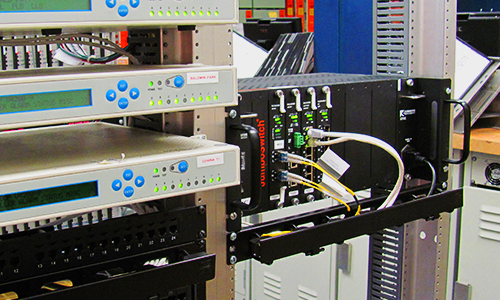
Metrolink deploys cost effective, ruggedized, scalable network
As part of its services expansion project, the Southern California Regional Rail Authority (Metrolink) needed to upgrade its communications and signaling network to meet the demands of increased ridership. In addition to Ethernet connectivity between control points, Metrolink needed backhaul for their 900Mhz radio and positive train control (PTC) networks. JumboSwitch connected all devices between 67 communications shelters using a scalable architecture to meet present and future.
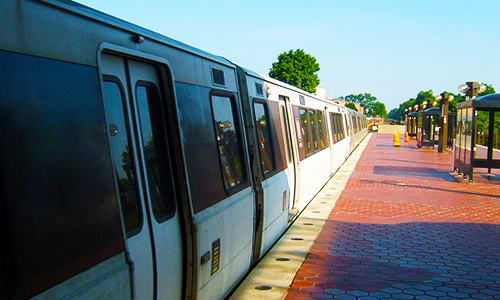
The Metro upgrades multiple systems simultaneously
The Metro was challenged with replacing 15+ year old wayside vital controllers while simultaneously upgrading its signaling and communications network. Jumboswitch seamlessly integrated all vital controllers, cameras, IP phones and more. TC Communications' network management system, TCView®, was chosen to handle configuration, administration, monitoring, and troubleshooting of the network.
Videos
Testimonials
"TC Communications' support and service has been excellent. [In] our experience with them they have been very service oriented. We have specified TC Communications' equipment in some of our future communications project designs."
- Jerone Hurst, Metrolink Southern California Regional Rail Authority
"TC Communications played an important role in providing training and helping District 6 to configure the first Jumboswitch in order for it to work with the existing network, and they continue to provide support as necessary."
- Samuel Campos, Traffic Electrical TMC Support
See the full testimonial
